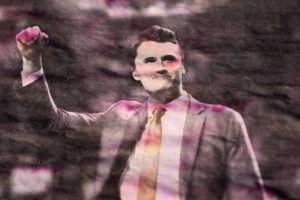Ethics panel warns House members not to share fake images
January 29, 2020
The House Ethics Committee is warning lawmakers not to share doctored images or videos that could “erode public trust, effect public discourse, or sway an election,” guidance that comes during a proliferation of online misinformation in the run-up to the 2020 elections.
In a memo sent to House members Tuesday, the committee said lawmakers or staffers could be found in violation of House ethics rules and subject to disciplinary proceedings for posting content intended to mislead the public.
“Members have a duty, and a First Amendment right, to contribute to the public discourse,” the authors of the memo wrote. “However, manipulation of images and videos that are intended to mislead the public can harm that discourse and reflect discreditably on the House.”
It’s the first time the committee has admonished members of Congress on the use of fake images and audio on social media, though the new guidelines may be difficult to enforce because of a loophole allowing fake images when used for satire or parody.
The warning comes three weeks after Rep. Paul Gosar tweeted a doctored photo of President Barack Obama shaking hands with Iranian President Hassan Rouhani. In a caption, he wrote that “The world is a better place without these guys in power.”
The original, unaltered photo featured Obama and now-former Indian Prime Minister Manmohan Singh in 2011. In the doctored image tweeted by the Arizona Republican, Singh is replaced by Rouhani, who remains in power. Obama and Rouhani never met in person.
It wasn’t the first time a member of Congress had shared a misleading image, or even the first time that particular fake photo had circulated. A political action committee used the same picture in a 2015 television ad supporting Sen. Ron Johnson, R-Wis.
Gosar’s tweet of the doctored image was retweeted more than 6,000 times and liked more than 22,000 times. Gosar later said he never intended the tweet to be taken seriously and ridiculed the journalists who wrote about it as “dim witted.”
“No one said this wasn’t photoshopped,” he wrote in a subsequent tweet, which was retweeted far less — 420 times. “No one said the president of Iran was dead. No one said Obama met with Rouhani in person.”
A spokesman for the House Ethics Committee declined to discuss the memo, or say whether it was prompted by a specific incident.
The guidelines are a good step and an indication that Congress is taking the spread of misinformation seriously, according to David Schultz, a political scientist at Hamline University in St. Paul, Minnesota. But he said lawmakers who post a fake video could always claim they didn’t realize it was fake, or that they intended it as a parody.
Technology and the internet have made it easier than ever to spread manipulated video, photography and audio. Disinformation experts are increasingly concerned about the emergence of “deepfakes,” fake videos created using artificial intelligence and machine learning to make it appear something happened that didn’t.
“Cheapfakes” like the doctored photo retweeted by Gosar are much easier to create by editing or cropping an image with readily available computer software.
“As much as we’re worried about foreign governments using social media to infiltrate and influence our elections, this could be even worse,” Schultz said Wednesday, predicting that Americans will only see more fake photos and videos of politicians in the months to come. “It’s going to be one of the big stories from the 2020 election.”
Jason Roe, a spokesman for Gosar’s reelection campaign, said the congressman would abide by the new guidelines. They are “perfectly reasonable and make good sense,” he said.






